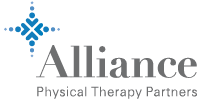
You can sprain your shoulder in a variety of instances, such as moving heavy furniture or playing sports. A shoulder sprain occurs from overstressing your shoulder, resulting in a tear of the ligaments that connect the bones of the joint and collarbone. It can be difficult to carry on your daily activities with a sprained shoulder, as it can limit your arm’s range of motion.
A shoulder sprain is an acute injury, meaning that it happens quickly and often due to trauma in a specific area. It can be quite painful, as the torn tissue will bleed, which causes swelling that puts pressure on your nerve endings.
With proper treatment, the recovery time for a sprained shoulder can last just a few weeks. If the sprain is severe, it could take several months before it completely heals.
Symptoms of a sprained shoulder
If you feel like you injured your shoulder, it may be difficult to determine the cause. There are a few different injuries that can damage your shoulder, such as a rotator cuff tear or a pinched nerve. But there are ways to identify a sprained shoulder.
The symptoms that can stem from a sprained shoulder include:
- Pain.
- Tingling.
- Stiffness.
- Soreness.
- Numbness.
- Spasms.
These symptoms can range from mild to severe.
A shoulder with a sprain may be confused with a shoulder strain, as strains have similar symptoms, but the injuries affect different parts of the shoulder. While a sprain affects the connective tissue between bones, a strain refers to a muscle injury.
Sprained shoulder recovery time factors
While we all wish that injuries would heal in the blink of an eye, a sprained shoulder takes time and patience to heal. The amount of time needed for recovery can vary from person to person, though it usually takes a few weeks. Some factors that influence the recovery time are:
- Severity — Sprains are graded on their severity on a scale of Grade 1 to 3. A Grade 1 sprain refers to minor stretching, while a Grade 3 sprain means a complete tear. A higher grade level will likely result in a longer sprained shoulder recovery time, often taking a few months.
- Age — As we age, so do our bodies. As we get older, it can take longer for muscles to heal. That means that the sprained shoulder recovery time may be longer for older people.
- Health — Your overall state of health can influence your sprained shoulder recovery time, especially the health of your immune system. People with strong immune systems will likely have shorter recovery times than those with weak immune systems.
How proper treatment can speed up sprained shoulder recovery
Proper treatment is crucial to speeding up your sprained shoulder recovery time. Two tried-and-true methods of treating sprains are the RICE method and physical therapy.
RICE stands for rest, ice, compression and elevation. These are four classic pain relief tools that are especially effective for treatment and pain management, especially when they team up and work together.
Physical therapy can go a long way in not only treating your shoulder sprains but speeding up your recovery as well. It can also prevent future injury by teaching you proper form during specific physical activities and helping you learn about the limitations of your body.
3 physical therapy treatments for sprained shoulders
A physical therapist may recommend a few methods for your sprained shoulder. Every treatment plan is personalized for your specific sprain, but here are three possible options to help alleviate your painful symptoms:
- Dry needling — The method of dry needling refers to using sharp needles to puncture the skin and release muscle tension.
- Manual therapy — A physical therapist can use manual therapy or hands-on techniques for long-term pain relief. This means that they use their hands to manipulate the tissue and muscle as a way to relieve tension and increase joint mobilization.
- Stretches — A physical therapist will teach you a variety of stretches that can ease the pain in your shoulder and assist with the healing process.
Alliance PTP is ready to help you find top-notch PT for sprained shoulder recovery
At Alliance Physical Therapy Partners, we’re proudly bringing together physical therapy practices across the country to help people get the high-quality PT they need.
Want to see a physical therapist in person? We can put you in touch with an Alliance PTP partner that’s close to you and that can treat your sprained shoulder.
Not keen on in-person PT sessions or not close to an Alliance PTP partner? No worries. We also offer effective and affordable virtual physical therapy through our Agile Virtual Physical Therapy platform.
Come find help for your injury or chronic condition today!
Get Help at a Location Near You
